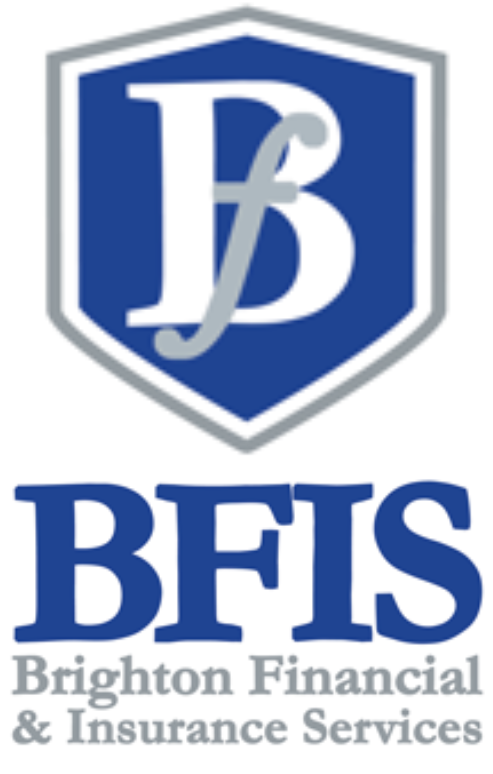California Amusement Park Insurance

9:00am - 6:00pm Mon-Fri
Will Reply in 15min*
Top 3 Recommended Policies
Index
Understanding Amusement Park Insurance
Legal Requirements for Amusement Parks in California
Assessing Risks in Amusement Parks
Choosing the Right Insurance Provider
Cost of Amusement Park Insurance
Claims Process for Amusement Parks
Common Misconceptions About Amusement Park Insurance
California is home to some of the most iconic amusement parks in the world, attracting millions of visitors each year. With such a high volume of guests, the importance of
comprehensive insurance coverage for these parks cannot be overstated. Amusement park insurance is designed to protect park owners, operators, and visitors alike from the myriad risks associated with rides, attractions, and other park operations. This article delves into the essential aspects of amusement park insurance in California, providing a thorough understanding of what it entails, why it's necessary, and how to choose the right coverage.
Understanding Amusement Park Insurance
Amusement park insurance encompasses a variety of coverage types tailored to the unique needs of parks. From liability coverage to property insurance, understanding the different components can help park operators make informed decisions about their insurance needs.
Types of Coverage
There are several key types of insurance coverage that amusement parks typically require:
- General Liability Insurance: This is the cornerstone of any amusement park insurance policy. It protects against claims of bodily injury or property damage that may occur on the premises.
- Property Insurance: This covers damages to the park's physical assets, including rides, buildings, and equipment, from events such as fire, theft, or vandalism.
- Workers' Compensation Insurance: This is essential for protecting employees who may suffer work-related injuries or illnesses, ensuring they receive medical care and compensation.
- Professional Liability Insurance: This provides coverage for claims arising from professional services, such as negligence or errors in judgment by park management.
Why Insurance is Essential for Amusement Parks
Operating an amusement park comes with inherent risks, from mechanical failures to accidents involving guests. Insurance serves as a safety net, protecting park owners from financial ruin due to lawsuits or unexpected events.
Moreover, many vendors, contractors, and even local governments may require proof of insurance before allowing parks to operate. Having adequate coverage not only safeguards the park but also enhances its credibility and reputation in the industry.
In addition to the standard coverages, amusement parks often consider specialized insurance options, such as event cancellation insurance. This type of policy can be crucial for parks that host concerts, festivals, or seasonal events, as it protects against financial losses due to unforeseen circumstances that could lead to event cancellations. Furthermore, amusement parks may also benefit from coverage that addresses the unique risks associated with specific attractions, such as water rides or roller coasters, which may require additional safety measures and inspections.
As the landscape of amusement parks evolves, particularly with the rise of technology and virtual experiences, insurance needs are also changing. Parks are increasingly investing in digital attractions and interactive experiences, which introduce new risks related to cybersecurity and data breaches. Therefore, having a comprehensive insurance strategy that includes cyber liability coverage is becoming essential for modern amusement parks to protect against these emerging threats, ensuring that both their assets and their guests' information remain secure.

Legal Requirements for Amusement Parks in California
California has specific legal requirements regarding insurance coverage for amusement parks. Understanding these regulations is crucial for compliance and operational success.
State Regulations
The California Department of Industrial Relations mandates that amusement parks carry certain types of insurance to protect both employees and visitors. This includes:
- Workers' Compensation: Required for all businesses with employees, this insurance covers medical expenses and lost wages for workers injured on the job.
- Liability Insurance: While not legally mandated, having general liability insurance is highly recommended to protect against potential lawsuits.
Local Ordinances
In addition to state regulations, local municipalities may have their own insurance requirements. These can vary significantly, so park operators should consult with local authorities to ensure compliance.
Some cities may require additional coverage, such as specific liability limits or endorsements for particular attractions. It's essential to stay informed about these local requirements to avoid penalties or operational disruptions.
Moreover, local ordinances can also dictate safety standards and operational protocols that amusement parks must adhere to. For instance, certain jurisdictions may enforce stricter safety inspections or require parks to maintain detailed records of ride maintenance and employee training. Compliance with these regulations not only protects the park from legal repercussions but also enhances the safety and enjoyment of all visitors, fostering a positive reputation within the community.
Additionally, parks must be aware of the Americans with Disabilities Act (ADA) regulations, which require accommodations for guests with disabilities. This includes ensuring that rides and facilities are accessible, which may involve additional insurance considerations. By proactively addressing these legal requirements, amusement parks can create an inclusive environment that attracts a wider audience while minimizing the risk of litigation related to accessibility issues.
Assessing Risks in Amusement Parks
Every amusement park faces unique risks based on its location, attractions, and visitor demographics. Conducting a thorough risk assessment is vital for determining the appropriate level of insurance coverage.
Identifying Potential Hazards
Common hazards in amusement parks include:
- Ride Malfunctions: Mechanical failures can lead to serious injuries, making it crucial for parks to maintain their equipment and have liability coverage in place.
- Slip and Fall Accidents: Wet surfaces, uneven walkways, and crowded areas can contribute to accidents, necessitating general liability insurance.
- Food Safety Issues: Parks that serve food must adhere to health regulations, as foodborne illnesses can lead to lawsuits.
Implementing Safety Measures
To mitigate these risks, amusement parks should implement rigorous safety protocols. Regular inspections of rides, comprehensive employee training, and clear signage can help prevent accidents and enhance overall safety.
Insurance providers may also offer risk management services, helping park operators identify vulnerabilities and develop strategies to minimize risks. This proactive approach can lead to lower insurance premiums and a safer environment for guests.
In addition to these measures, parks should consider investing in advanced technology such as ride monitoring systems that provide real-time data on equipment performance. These systems can alert operators to potential issues before they escalate into dangerous situations. Furthermore, the integration of crowd management tools can help control visitor flow, reducing the likelihood of overcrowding and associated accidents. By leveraging technology, amusement parks can create a more secure experience for their patrons while also enhancing operational efficiency.
Moreover, engaging with the community and gathering feedback from visitors can also play a crucial role in identifying potential risks. Regular surveys and open forums can help park management understand visitor concerns and perceptions regarding safety. This feedback loop not only fosters a culture of safety but also demonstrates the park's commitment to providing a secure environment, ultimately building trust and loyalty among guests. By prioritizing both technological advancements and community engagement, amusement parks can significantly enhance their safety protocols and risk management strategies.
Choosing the Right Insurance Provider
Selecting the right insurance provider is a critical step in ensuring adequate coverage for an amusement park. Not all insurers specialize in amusement park insurance, so it's essential to find one with experience in this niche area. The unique nature of amusement parks, with their diverse attractions and large crowds, means that the risks involved can be quite different from those in other industries. Therefore, a provider that understands these nuances can offer tailored solutions that better protect your business.
Factors to Consider
When evaluating potential insurance providers, consider the following:
- Experience and Expertise: Look for insurers with a proven track record in the amusement park industry. They should understand the unique risks and coverage needs. A provider with a history of working with similar businesses will likely be more adept at identifying potential hazards and suggesting appropriate coverage options.
- Coverage Options: Ensure the provider offers a comprehensive range of coverage options tailored to amusement parks, including liability, property, and workers' compensation. Additionally, consider coverage for specialized attractions like water rides or roller coasters, as these may require specific endorsements due to their inherent risks.
- Customer Service: A responsive and knowledgeable customer service team can make a significant difference when navigating claims or policy changes. Look for reviews or testimonials that highlight the provider's commitment to customer satisfaction, especially during critical situations.
Getting Quotes
Once potential providers have been identified, obtaining quotes is the next step. It's advisable to gather quotes from multiple insurers to compare coverage options and costs. Ensure that the quotes are for similar coverage levels to make an accurate comparison. This process can also reveal any discrepancies in what each insurer considers essential coverage, helping you to make a more informed decision.
During this process, ask questions about policy details, exclusions, and any additional endorsements that may be necessary for specific attractions or operations. Clear communication will help avoid surprises down the line. It's also beneficial to inquire about the claims process—understanding how quickly and efficiently claims are handled can significantly impact your experience as a policyholder. Furthermore, consider discussing risk management strategies with potential providers; many insurers offer valuable resources or training programs that can help mitigate risks and enhance safety protocols at your amusement park.
Cost of Amusement Park Insurance
The cost of amusement park insurance can vary widely based on several factors, including the size of the park, the number of attractions, and the overall risk profile. Understanding these factors can help park operators budget effectively for insurance expenses.
Factors Influencing Premiums
Several key factors influence the premiums for amusement park insurance:
- Location: Parks located in high-traffic tourist areas may face higher premiums due to increased visitor numbers and associated risks.
- Attraction Types: Parks with more extreme rides or attractions may incur higher insurance costs due to the elevated risk of accidents.
- Claims History: A history of claims can lead to higher premiums, while a clean record may result in lower costs.
Budgeting for Insurance
When budgeting for insurance, it's essential to consider not only the premiums but also potential deductibles and out-of-pocket expenses. Setting aside a contingency fund for unexpected incidents can provide additional financial security.
Regularly reviewing and adjusting the insurance policy can also help ensure that coverage remains adequate as the park evolves and grows. This proactive approach can prevent gaps in coverage and unexpected costs.
In addition to the aforementioned factors, the overall safety protocols and maintenance practices of the amusement park play a crucial role in determining insurance costs. Parks that invest in regular safety audits, employee training programs, and routine maintenance of rides can often negotiate better rates with insurers. Insurers appreciate a commitment to safety, as it reduces the likelihood of accidents and subsequent claims, thereby making the park a lower risk. Furthermore, parks that implement advanced technology for ride monitoring and visitor safety may also find themselves eligible for discounts, as these innovations demonstrate a proactive approach to risk management.
Moreover, the type of insurance coverage selected can significantly impact costs. Amusement parks typically require a combination of general liability, property insurance, and specific coverage for rides and attractions. Each of these policies comes with its own set of premiums and deductibles. Additionally, parks may consider adding coverage for events such as weather-related closures or pandemic-related disruptions, which have become increasingly relevant in recent years. By carefully evaluating the types of coverage needed and working closely with an insurance broker who specializes in amusement parks, operators can tailor their insurance portfolio to meet their unique needs while optimizing costs.
Claims Process for Amusement Parks
In the unfortunate event of an incident requiring a claim, understanding the claims process is crucial for a smooth resolution. Each insurance provider may have specific procedures, but there are general steps that most parks will follow.
Reporting Incidents
Promptly reporting incidents to the insurance provider is essential. This includes documenting the event thoroughly, gathering witness statements, and taking photographs of the scene if applicable. The more information provided, the smoother the claims process will be. Additionally, it is advisable to notify park management immediately, as they may have their own protocols for handling incidents and can provide assistance in gathering necessary information. This proactive approach not only helps in expediting the claims process but also ensures that safety measures are reviewed and improved to prevent future occurrences.
Working with Adjusters
Once a claim is filed, an insurance adjuster will typically be assigned to investigate the incident. This may involve reviewing documentation, interviewing witnesses, and assessing damages. Cooperation with the adjuster is vital to ensure a fair evaluation of the claim. During this phase, it is beneficial to provide any additional evidence that may support your case, such as medical reports or maintenance records of the rides involved. Adjusters are trained to look for all angles of an incident, so presenting a comprehensive view can significantly influence the outcome of the claim.
It's important to keep detailed records of all communications and documents related to the claim. This can help resolve any disputes that may arise during the process. Furthermore, understanding the timeline for the claims process can alleviate some of the stress associated with waiting for a resolution. Many insurance companies have specific guidelines regarding how long they will take to investigate and respond to claims, and being aware of these timelines can help manage expectations. Regular follow-ups with the adjuster can also ensure that your claim remains a priority and that you are informed of any developments as they occur.
Common Misconceptions About Amusement Park Insurance
Despite the importance of amusement park insurance, several misconceptions can lead to misunderstandings and inadequate coverage. Addressing these myths can help park operators make informed decisions.
Myth: Liability Insurance is Optional
One common misconception is that liability insurance is optional for amusement parks. In reality, while it may not be legally mandated, it is crucial for protecting against potential lawsuits and financial loss. Without it, park owners expose themselves to significant risk.
Myth: All Insurance Providers are the Same
Another myth is that all insurance providers offer the same coverage. In truth, coverage options, limits, and exclusions can vary widely between insurers. It's essential to research and compare providers to find the best fit for specific needs.

Conclusion
California amusement park insurance is a critical aspect of operating a successful and safe amusement park. By understanding the various types of coverage, legal requirements, and risk factors, park operators can make informed decisions about their insurance needs.
Choosing the right insurance provider, budgeting for premiums, and navigating the claims process are all essential components of effective risk management. By dispelling common misconceptions and prioritizing safety, amusement parks can create enjoyable experiences for visitors while protecting their financial interests.
Ultimately, investing in comprehensive insurance coverage is not just a legal obligation; it is a commitment to the safety and well-being of both employees and guests. As the amusement park industry continues to grow, staying informed and proactive about insurance needs will ensure long-term success and sustainability.



